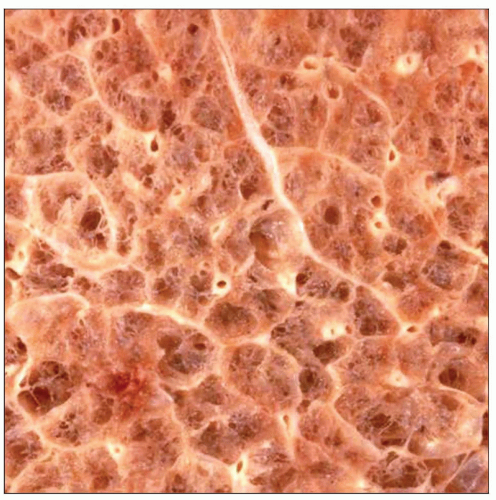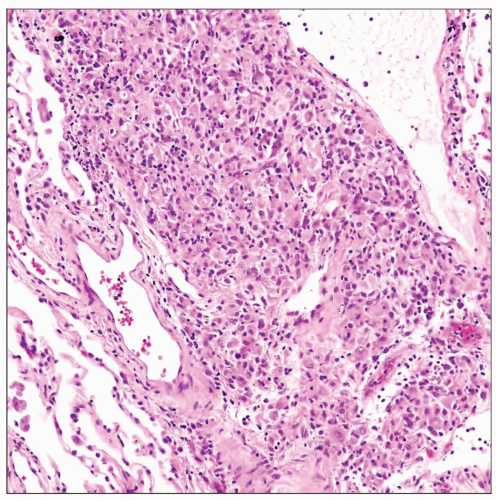Erdheim-Chester Disease
Key Facts
Terminology
Rare histiocytic infiltrative disorder that most commonly affects bones but may affect other organs, including lung
Clinical Issues
Bone involvement is most common site
50% of patients have extraskeletal involvement, including lungs
Progressive disorder; morbidity and mortality depend on the presence or absence of extraskeletal involvement
Image Findings
Diffuse interstitial bilateral infiltrates with thickening of the pleura and interlobular septa
Characteristic radiographic finding is interstitial opacities with thickening of interlobular fissures and septae in the lung
Symmetrical osteosclerosis of the diaphyses of long bones
Microscopic Pathology
Diffuse infiltration of histiocytes along lymphatic routes, including the pleura, septa, and perivascular and peribronchiolar interstitium
Characteristic thickening of the pleura that tracks into lung parenchyma along the interlobular septa
Ancillary Tests
Histiocytes are positive for CD68 and factor XIIIa
Scattered S100 positive cells may be identified
 Gross appearance of the lung in Erdheim-Chester disease shows thickened interlobular septa with dilatation of airspaces. |
TERMINOLOGY
Abbreviations
Erdheim-Chester disease (ECD)
Synonyms
Chester-Erdheim disease, lipoid granulomatosis
Definitions
Rare histiocytic infiltrative disorder that most commonly affects bones but may affect other organs, including lung
ETIOLOGY/PATHOGENESIS
Etiology
Unknown
Has been proposed to be “macrophage counterpart” of Langerhans cell histiocytosis
Study using HUMARA assay has demonstrated monoclonality in histiocytic cells in some cases
CLINICAL ISSUES
Epidemiology
Incidence
Extremely rare condition
Age
25-70 years of age
Gender
Slight male predominance
Site
Bone involvement is most common site
Extraskeletal involvement is seen in 50% of patients, including
Lung and pleura
Central nervous system
Kidney and retroperitoneum
Breast and skin
Heart and pericardium
Presentation
Dyspnea
Fever
Weight loss
Bone pain
Natural History
Pulmonary involvement may precede skeletal manifestations in some cases
Eventually, all patients develop skeletal manifestations
Development of clearly delimited bilateral and symmetrical metaphyseal and diaphyseal areas of cortical sclerosis of long bones is classical
Progressive disorder; morbidity and mortality depend on the presence or absence of extraskeletal involvement
Prognosis
About 60% of patients die due to respiratory failure
Patients with central nervous system involvement may die due to brain deterioration
Stay updated, free articles. Join our Telegram channel

Full access? Get Clinical Tree



